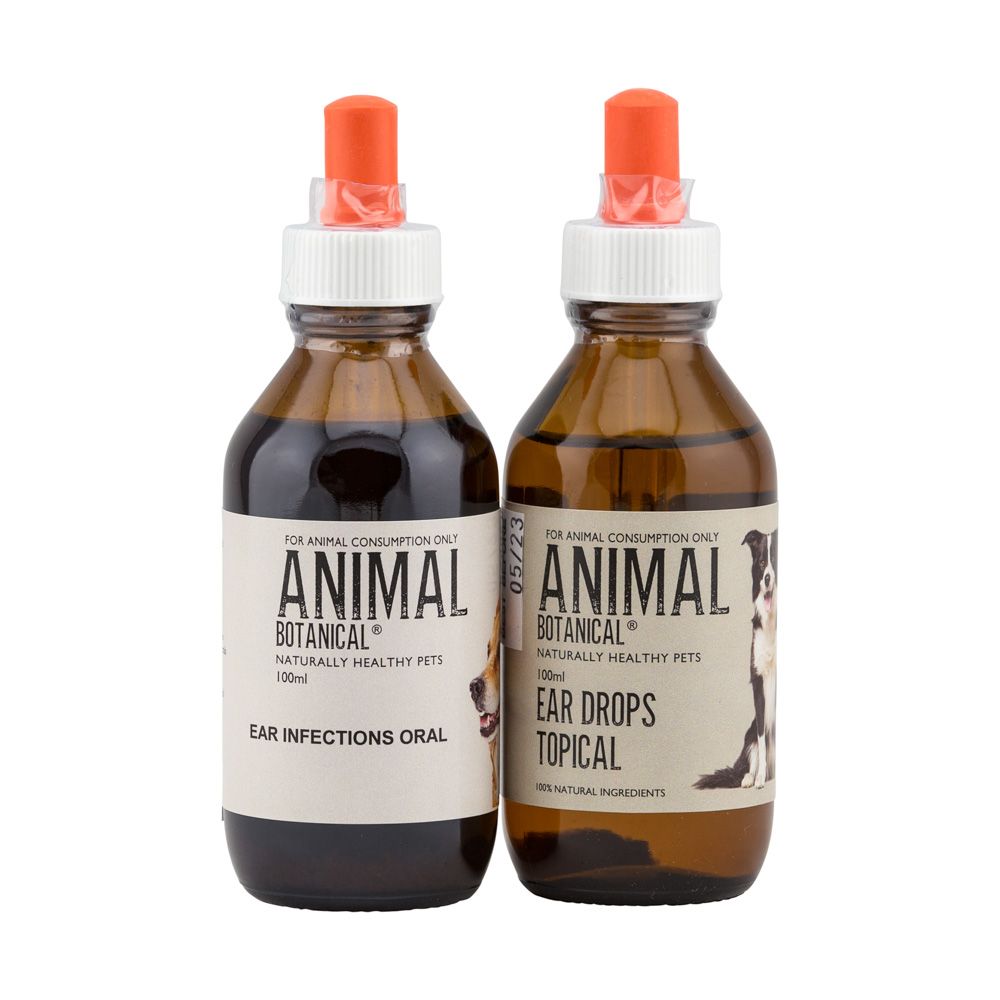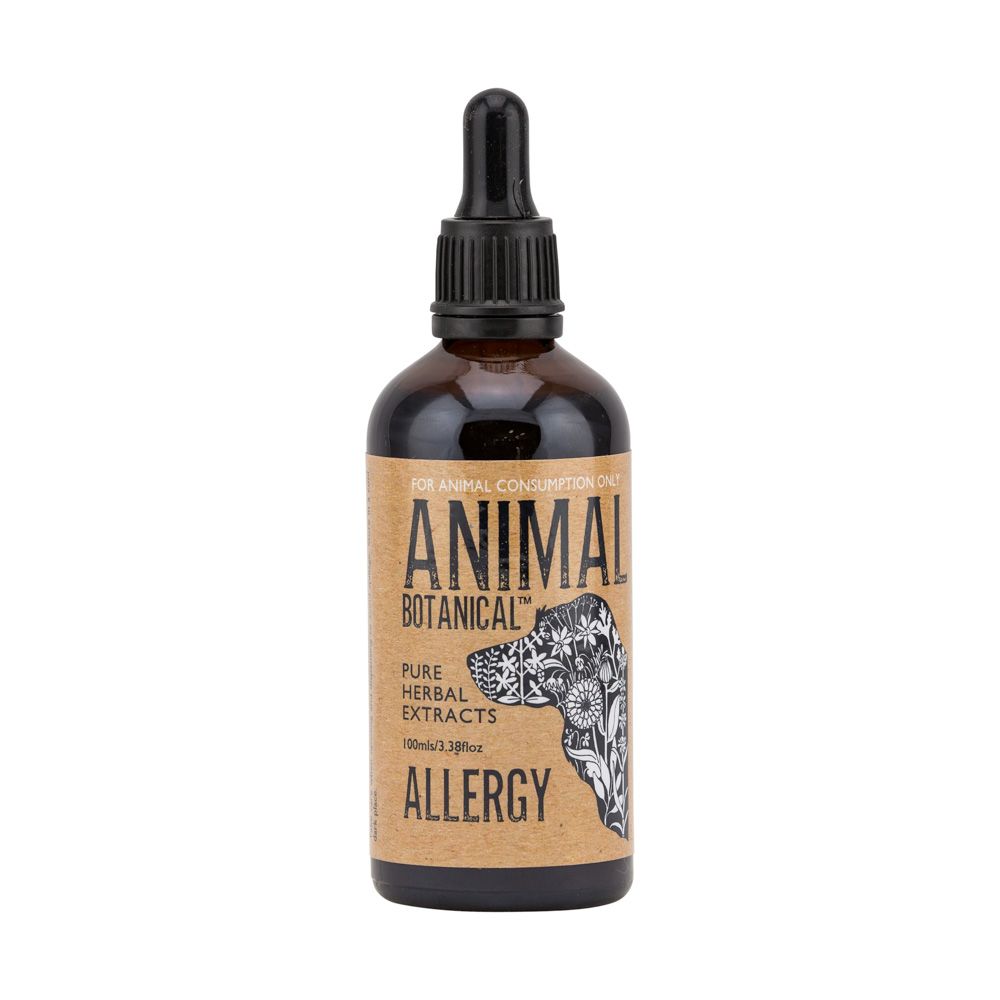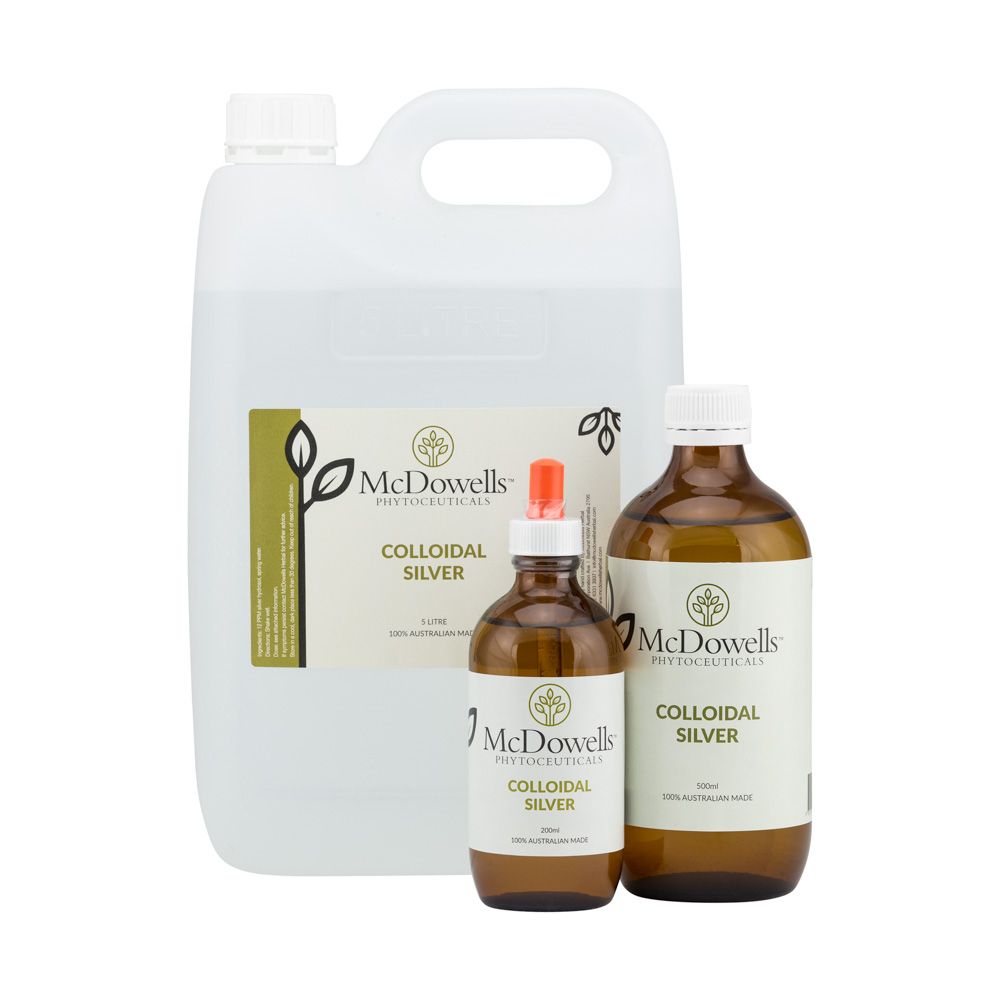Ear infections can be a very painful condition for dogs, and they cause inflammation, damage and scaring in the ear canal when not addressed adequately. It can be incredibly frustrating when you have finally resolved one infection, only to find another one starting up. You are doing everything right, yet still the continue to come back...
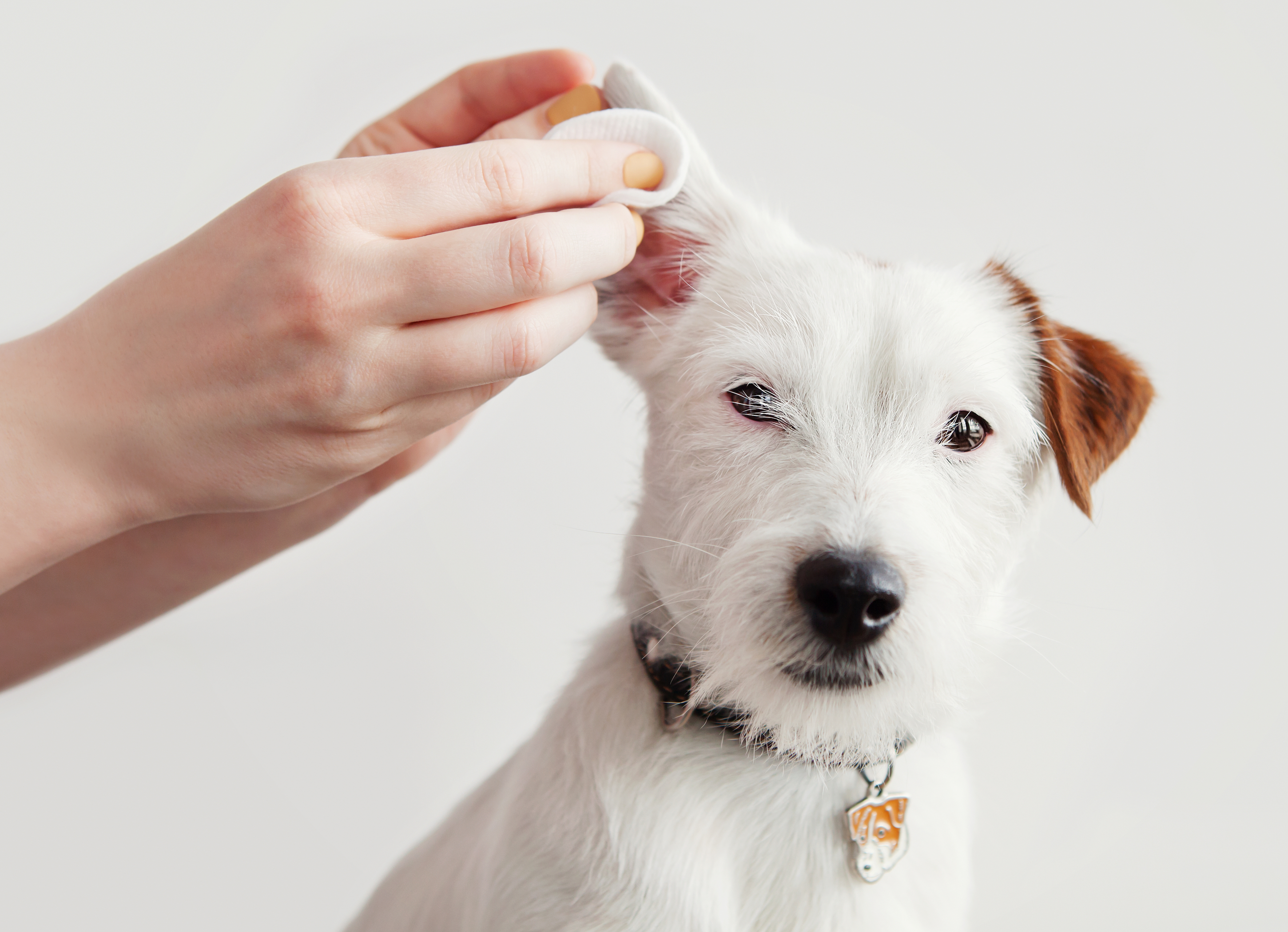
An underlying factor in many ear infections is allergies; known as allergic otitis.
When dealing with this type of ear infection you can keep the ear clean and dry, and and remove all the excess wax and hair, but still have continual reoccurrences.
Dogs can experience allergies to something in the environment, or in their diet or to fleas. Contact with the allergen causes an immune response which cause inflammation and irritation to the tissues. Tissues that are often affected are the skin, sinuses, eyes, and the ears. This inflammation and irritation in the ear will cause an increase in the production of wax and increase the blood flow which increases heat within the ear.
The skin in the ear canal hosts many different bacteria, fungi and even viruses which are kept in balance to create a healthy and protective skin microbiome, which, in combination with the skin mantle creates a protective skin barrier. There are pathogenic species as part of this microbe community, however the immune system keeps them in balance and under control. When there is inflammation, increased mucous or wax build up, irritation to the skin or anything which affects the integrity of the skin, these unfriendly species able to proliferate and lead to infection.
Allergies cause irritation to the skin leading to inflammation, an increase in blood flow, and increase in wax build up which weakens the integrity of the skin. This creates the perfect environment for an infection to occur.
Itchy dogs can chew their paws, continually scratch, and damage their hair, or allergy-based ear infections can be part of a bigger problem.
When caused by an environmental allergen the ear infection is generally recurrent and typically seasonal however if the cause is food related then it will occur all year.
Dogs with floppy ears are more prone to this type of allergy as air flow to the ear is reduced, creating theideal environment for infections.
When ear infections are not resolved promptly, or when they continually reoccur, there can be tissue damage and scarring in the ear. This can reduce the size of the ear opening and lead to more problems with airflow, congestion and difficulty applying the ear drops where they are needed most.
Symptoms that can be associated with ear infections driven by allergies;
- Shaking the head and scratching the ears
- Rubbing their ears and side of the face along the carpet.
- Tilting the head
- The ears can be smelly, with or without a discharge
- The ear can feel hot and looks red
- Inside the ear can look swollen and irritated
- Pained reaction when touching the ear, or general patting on the head
General allergy symptoms
- Chewing and licking the paws
- Rubbing of the face and eyes on the carpet or grass
- Uncontrollable scratching, even to the point of skin damage.
- Redness and irritation of the skin
- Licking and chewing any part of the body
- Watery eyes or nose
- Reverse sneezing
- Hives
- Loss of fur
When addressing allergic otitis, it is important to dampen the allergic response, reduce the irritation and inflammation of the tissues, support the immune system, and help to resolve the infection.
We have a core ear infection program which helps to address the infection itself. This includes aninternal mix given orally to address and improve clearance of the waste products of the infection. As well as external ear drops used within the ear canal, helping to dry the ear canal and change the pH with the inclusion of Acetic acid inhibiting the proliferation of the pathogenic bacteria and yeasts.
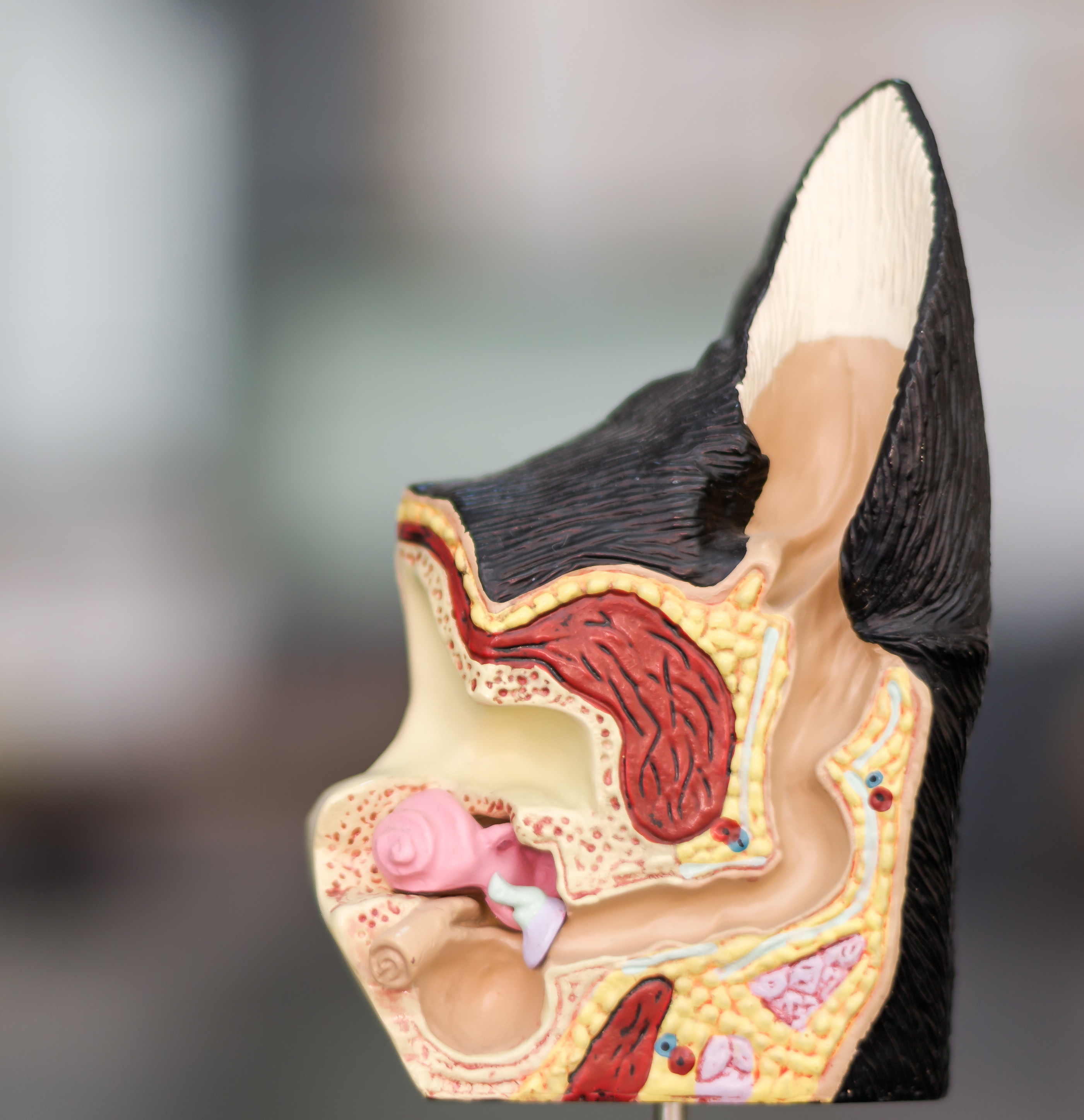
To address the underlying allergy, I like to include the Animal Botanical Allergy this helps to regulate and balance the immune system, reducing the hypersensitivity to the allergens. This can also help to reduce the irritation and inflammation that is occurring within the ear canal.
Adding in some colloidal silver can also be useful if the infection needs some additional antimicrobial support to get it under control.
Finding the underlying cause of the allergic response can also be an important part of the protocol. This can be much easier when it is common food ingredient that is easy to avoid, however this is much harder when it is an environmental allergy that is hard to identify.
If you would like to discuss your dogs recurrent ear infections or allergies, please fill out one of our free online consultation forms and one of our consultants will be in contact.
Written by Kerrie Hyland – naturopath and animal naturopath

